#Local Lead Launcher
Explore tagged Tumblr posts
Text

[ 📹 Wounded civilians, including a young child, are brought to a hospital in Gaza after the Israeli occupation forces bombed a residential home belonging to the Shaat family in the Maraj neighborhood, northeast of Rafah, in the southern Gaza Strip, on Wednesday. 📈 The death toll in Gaza has risen again, now exceeding 36'171 Palestinians killed, while another 81'420 others have been wounded since Oct. 7th, 2023. ]
🇮🇱⚔️🇵🇸 🚀🏘️💥🚑 🚨
236 DAYS OF GENOCIDE IN GAZA: ISRAELI TANKS ROLL THROUGH CENTRAL RAFAH, WHITE HOUSE CLAIMS ISRAELI OCCUPATION DOES NOT VIOLATE BIDEN'S RED LINE, OCCUPATION BOMBS TENTS IN 'SAFE ZONE' OF AL-MAWASI, GENOCIDE CONTINUES UNABATED
On 236th day of the Israeli occupation's ongoing special genocide operation in the Gaza Strip, the Israeli occupation forces (IOF) committed a total of 6 new massacres of Palestinian families, resulting in the deaths of no less than 75 Palestinian civilians, mostly women and children, while another 284 others were wounded over the previous 24-hours.
It should be noted that as a result of the constant Israeli bombardment of Gaza's healthcare system, infrastructure, residential and commercial buildings, local paramedic and civil defense crews are unable to recover countless hundreds, even thousands, of victims who remain trapped under the rubble, or who's bodies remain strewn across the streets of Gaza.
This leaves the official death toll vastly undercounted, as Gaza's healthcare officials are unable to accurately tally those killed and maimed in this genocide, which must be kept in mind when considering the scale of the mass murder.
"The Israelis have said this was a tragic mistake," US National Security spokesperson, John Kirby, makes excuses for the Israeli occupation's bombing of a UNRWA displacement camp for Palestinian refugees in the Tal al-Sultan neighborhood, north of Rafah, in the southern Gaza Strip, two nights ago that resulted in the deaths of at least 45 Palestinians and wounded 249 others.
The response came after Kirby was asked whether the slaughter in the displacement camp qualified as the kind of "death and destruction" Biden claimed he didn't want to see in Rafah, drawing a "red line" at an Israeli invasion of Gaza's southernmost city.
Kirby claimed the US doesn't have "a measuring stick here or a quota," going on to add that "We've also said we don't want to see a major ground operation in Rafah that would really make it hard for the Israelis to go after Hamas without causing extensive damage and potentially a large number of deaths. We have not seen that yet."
This comes at the same time as Israeli tanks and armored vehicles have been confirmed to have advanced into eastern, western and central Rafah, including Merkava tanks and remotely controlled M113 armored personnel carriers, which the Israeli media says are conducting operations "east of Rafah and advancing towards the center and west of the city."
The Israeli occupation forces (IOF) stated that "our forces are operating in Rafah with the aim of disbanding the Hamas battalions in Rafah, rocket launchers, heavy artillery, ammunition and terrorist tunnels."
Occupation forces are also operating along the "Philadelphi axis," south of Rafah, which they claim have discovered dozens of tunnels leading from Gaza into the Egyptian Sinai.
Occupation army officials were quoted in the Hebrew media as saying that "the operation in Rafah is progressing precisely with all the complexities- a million people have already been evacuated [forcefully displaced] from the city."
The Israeli occupation forces also said that the "Nahal Brigade," led by the 162nd Division is fighting in ongoing operations in Rafah, destroying so-called "terrorist infrastructure."
In the meantime, the Israeli occupation committed a new horrific massacre of innocent civilians, when occupation warplanes fired several missiles into the tents of displaced Palestinian refugees in the Al-Mawasi area, northwest of Rafah, in the southern Gaza Strip, killing at least 21 civilians and wounding 64 others, at least 10 of whom remain in critical condition.
In response to the purposeful massacre, the Israeli occupation disavowed their responsibility for the strike, claiming on Tuesday evening that "contrary to reports received in the past few hours, the Israeli army did not attack the humanitarian area in Al-Mawasi," without elucidating on the details.
In a statement issued on Wednesday, the Hamas resistance movement stated that the "Zionist enemy" continues to "target the tents of displaced people west of Rafah, and commit a new massacre that claimed the lives of dozens of martyrs and wounded."
Hamas went on to state that the Israeli occupation is "actively challenging the decisions of the International Court of Justice through his decision to directly and deliberately target the largest number of civilians."
The Israeli occupation authorities had previously designated the Al-Mawasi area a "safe zone," and did not call for the evacuation of civilians from the heavily damaged neighborhood.
According to local reporting, the targeted displacement camp, filled with the tents of civilian families, was located just 100 meters from the American field hospital, west of Rafah.
Meanwhile, a number of civilians, including young children, were slaughtered overnight, while other residents were wounded, in an Israeli airstrike on the Khan Yunis Governate.
According to local correspondants, Zionist warplanes bombed a residential home belonging to the Abu Jazar family in the Ma'an neighborhood, south of Khan Yunis, in the southern Gaza Strip, resulting in the deaths of several civilians, including children, and wounded a number of others who were taken to the European Gaza Hospital in the city.
Several more civilians were killed after Israeli fighter jets bombed a house belonging to the Sharat family, near the government clinic in the Sheikh Radwan neighborhood, north of Gaza City.
Similarly, Israeli aircraft targeted a residential home belonging to the Yassin family in the Mufti's land area, north of the Nuseirat Camp, in the central Gaza Strip.
IOF Merkava tanks have also been stationed in the central areas of the Yabna Refugee Camp, next to the Al-Huda Mosque in Rafah, in addition to advancing near the Care Junction, adjacent to the Ali Ibn Abi Talib Mosque, and also penetrated areas of the Al-Awda, Al-Najma, and Al-Sharqi neighborhoods.
Occupation Merkava tanks and armored personnel carriers were also witnessed advancing in the Burqa Stadium, and into the central areas of the Shaboura Camp, while Israeli missiles and artillery shelling bombed resident's homes at random, intermittently.
Israeli warplanes and vehicles also fired machine guns towards civilian homes in central and western Rafah, and also in the vicinity of the Tal Zu'rob neighborhood, southwest of the city.
Similarly, Zionist air forces bombed a house belonging to the Al-Ghurra family in the vicinity of the Abdullah Azzam Mosque, in the Al-Sabra neighborhood of Gaza City, resulting in the martyredom of 5 civilians and wounding a number of others.
Israeli occupation forces also killed Dr. Issam Rawhi Muhammad Aql, a doctor with the Al-Quds Hospital, who was murdered in his home in the Bureij Camp, in central Gaza, according to a report by the Palestinian Red Crescent Society (PRCS).
The mass murder of Palestinians continued when Zionist air forces targeted a residential house belonging to the Hamdan family in the New Camp area of the Nuseirat Camp, in the central Gaza Strip, wounding three Palestinians who were transported to Al-Awda Hospital in the camp.
Neighborhoods east of Gaza City also experience intense gunfire from Israeli military vehicles, while occupation aircraft bombarded the western neighborhoods of the Jabalia Refugee Camp, in Gaza's north, resulting in several casualties.
Israeli airstrikes also pummeled areas of central and western Rafah, coinciding with artillery and tank shells fired into residential buildings.
In yet another war crime, Zionist warplanes bombed a gathering of civilians in the Kaf al-Mashrou area, east of the city of Rafah, resulting in civilian deaths and dozens of other casualties.
Civilians were also killed in an IOF bombing near Al-Iskan Al-Abyad, west of the Tal al-Sultan neighborhood of Rafah.
At the same time as Israeli tanks station themselves in neighborhoods across Rafah, Merkava tanks were also seen establishing control over neighborhoods east of the Jabalia Camp, in the northern Gaza Strip, advancing through blocks 1-8 while detonating residential homes and buildings in the area.
In another series of assaults, at least 9 civilians were killed, including a doctor, near Kamal Adwan Hospital in Beit Lahiya, in the northern Gaza Strip, while several others were killed and wounded in a strike on the town of Beit Hanoun.
As a result of the Israeli occupation's ongoing special genocide operation in the Gaza Strip, the death toll among the Palestinian population has increased to 36'171 killed, including upwards of 10'000 women and over 15'000 children, while another 81'420 others have been wounded since the start of the current round of Zionist aggression, beginning with the events of October 7th, 2023.
May 29th, 2024.
#source1
#source2
#source3
#source4
#source5
#source6
#source7
#source8
#source9
#source10
#videosource
#graphicsource
@WorkerSolidarityNews
#gaza#gaza news#gaza war#gaza genocide#war in gaza#genocide in gaza#israeli genocide#genocide#israel#israeli occupation#israeli war crimes#war crimes#crimes against humanity#gaza conflict#israel palestine conflict#war#occupation#palestine#palestine news#palestinians#free palestine#middle east#news#geopolitics#world news#global news#international news#breaking news#current events#politics
43 notes
·
View notes
Text
This is the Year: Juan 'Juice' Ortiz x Reader

Part of @storiesofsvu Holiday Bingo! The square was Resolutions!
Tagging: @stydiaswish @goosterroose @crazy4chickennuggets @kmc1989 @withakindheartx @darqchilddaydreamz

Juice doesn’t believe in New Year’s resolutions. He’s made them plenty of times over the years, but he’s never been able to stick to it. That is until he meets you.
He’s sitting on the swings by the clubhouse when midnight comes around, a beer clasped in his hand. His gaze shifts to Tig whose standing on the porch, his arm looped around Suzie’s waist, his thumb ghosting over her cheek. Those silver rings contrast against her skin as he tips her chin up and kisses her. There’s so much love between the two of them, there has been from the start and now the two of them have a baby.
Juice wants that, he wants to feel like he matters to someone, to love them and be loved in return.
This is the year, I do it. He promises himself as he watches the fireworks erupt throughout the night sky. This is the year he asks you out.
It started in late November in the botanical gardens. Tig had been doing a lot of treks across the country, smoothing out the Sons withdrawal from the gun game. Suzie was getting big, trying to finish up work at Cara, Cara before maternity leave started. She was finding it hard to walk Bonnie. Juice had offered to help out, he loved animals especially dogs. He’d started taking Bonnie to the botanical gardens. He’d read up on scent walks, how they were mentally relaxing for dogs. He thought that it may help with the healing process after everything she’d been through with the dog fighting ring.
The two of them had gotten into a routine. They’d go to the gardens, and she’d have a sniff around, explore for a bit before they played with the ball launcher. After that they’d chill under a tree, get some doggie ice cream, people watch and play tug.
They’ve been doing this for a couple of weeks before he notices you. The pretty girl on the bench with the sketch book. He’s always been fascinated by creatives, he’s more mechanical minded, good with his hands. It’s the reason he’s so good with computers and with engines, there’s something about them that just makes sense to him. He catches your eye, and you give him that smile. The one that makes his entire world light up.
It's April when the roses come into bloom, it gives the botanical gardens a new lease of life. Bonnie’s in her element, there’s new smells to explore. The dog has come out of her shell so much over the past few months that Tig’s asked him to continue with the dog walking. Both him and Suzie are busy with the new baby, they want to make sure Bonnie doesn’t get left out.
It’s Bonnie that makes the first move, the gardeners have been rearranging some of the plants, adding new ones. You just so happen to be seated alongside of one of them, the lead slips out of his grasp as she takes off bee-lining towards it. He hauls ass after her, calling her name. When he eventually catches up, she’s seated in front of you, tongue lolling out of her mouth as you shower her with attention.
“Sorry, sorry.” He apologises, scooping up the leash. “There’s a lot of new smells, she gets excited.”
“I get it.” You tell him. “My friend’s dog is the same. We usually come out here in the evenings, play a little, it’s a good wind down.”
“You like dogs?” Juice asks as he scratches behind Bonnie’s ears.
“Sometimes more than I like people.” You say with a smile.
He laughs because honestly, he feels the same way.
“Hey, let me buy you a coffee.” He says, tipping his head towards the coffee cart by the fountain. “You can tell me a little more about your friend’s dog.”
That’s how it starts. He learns that you’re an artist, that you teach adult classes at the local college throughout the day and some evenings. You come to the botanical gardens to get to some versatility, drawing nature throughout the seasons, sometimes you draw people. You flick through the pages of your sketchbook, showing him different depictions of the same space. It transforms throughout the year, sometimes the shading changes, you add shadows. It grows, it develops, it becomes something more.
“I prefer painting.” You tell him when the two of you head out on one of your evening dog walks. Bonnie and Misha, the Cockapoo are checking out the trail ahead as you walk side by down, sipping hot chocolates from the coffee cart. “I just love working with colour, seeing the difference it makes, the contrast.”
“You have such passion.” He tells you as his thumb chases up the side of the takeaway cup.
“What are you passionate about?” You ask him, your shoulder bumping against his.
“Honestly?” He asks, taking a gulp of his caramel hot chocolate.
“Yea.” You say with that enthusiastic grin of yours. “What gets you up in the morning? What do you live and breathe?”
“Engines.” He tells you, shrugging his shoulders as you laugh. “I don’t know what to say! When I start stripping down a bike and I put my hands to work, something in me just clicks. It’s like the whole world makes sense. I just focus on the task, the nuts and bolts of it and I don’t know…” he trails off for a second as he tries to find the words. “It’s soothing you know?”
“That’s how I feel about painting.” You tell him, your gaze on the two dogs as they snuffle in one of the bushes. “I couldn’t do it for a while, a couple of years ago and it drove me absolutely crazy.”
“I noticed the scars.” Juice remarks gesturing at your right arm. “You broke your arm at one point?”
“What’s Misha got?” You say, quickening your step before you call out for the dog to ‘drop it’.
The walks turn to dinner dates, which turn to late night bike rides because sometimes he can’t sleep, and he discovers that you can’t either. You feel so good against him, your arms wrapped around his waist, your cheek pressed against his back. It’s after one of these rides that you invite him inside and he knows it’s not just for coffee.
He makes love to you in fresh sheets, in a room that’s filled with canvases and colour. His fingers entwin with yours, your thighs hitching around his waist as he loves you like he’s loved no one else. Your fingertips chase over the scars on his back, the ones from where he was shivved in prison.
You know that’s one of the reasons he doesn’t sleep sometimes. He dreams about that day, of the shiv plunging into him, the blood dripping onto the concrete underneath his feet.
Your palms trail down the curve of his spine, caressing his ass before you draw him even deeper, and he moans into your mouth because until then he’s tried to be a gentleman but you…
You untether him completely.
It’s playful, sensual and soft. He smiles as you bite his lower lip because his baby, she knows exactly what she wants and it’s him. When you shatter underneath him, it’s the most beautiful thing he’s ever seen. He comes hard, his hips flush against yours as he drinks down your pleasure.
Another year, another New Year’s party.
Juice steals you away before midnight, breaking into the botanical gardens where the two of you first met. He lays down a picnic blanket so that you can watch the fireworks in peace.
It’s perfect, this moment, lying beneath the stars with the woman he loves.
He’s been carrying the ring around with him since he bought it a couple of weeks, just waiting for the right time and he knows now in his heart that this is it.
He says your name as he props himself up, withdrawing the ring from his pocket. You tilt your head towards him as he holds it up.
“Simone, I love you.” He tells you, the earnestness shining in his features. “Let me spend the rest of my life making you as happy as you make me.
“Juan…”
He just loves the way you say his name. You’re the only one that gets to call him that, the only one he lets call him that.
“Juan, I can’t.”
His world crashes in on him. The ring slips from between his fingers tumbling onto the blanket and getting lost in the folds. Everything goes numb, he feels the emptiness flood through his body as you reach for him, your thumb ghosting across his cheek. It’s just an intimate gesture, and it hurts so fucking much.
“It’s not you.” You tell him, your voice cracking. “It’s me, it’s entirely me.”
The story comes out in stops and starts and Juice’s heart breaks with every single word. You can’t marry him, of course you can’t, because you’re still married to the abusive asshole who used to beat the hell out of you.
It’s the reason you left Seattle and came to Charming.
You’d ran after he’d smacked you around so hard, he’d shattered your right arm. He’s the reason it aches when it rains, the reason you had to stop painting a couple of years ago.
“I never divorced him.” You tell Juice as you sit on the picnic blanket with your knees drawn up to your chest. “If I do, he’ll find me…”
Your eyes sting, the tears leaking down your cheeks. You let out a shaky exhale before you raise your eyes to the sky.
“It’s over, right?” You say as you use the back of your hand to chase away the tears.
“No.” Juice says quietly as he sits beside you. “Not if you don’t want it to be.”
“I can’t give you what you want,” You say softly, toying with the beaded bracelet on your wrist. “I can’t be your wife.”
He gathers you up into his arms, drawing you into the comfort of his body. If he could take this all away for you he would, but he can’t because your history is what brought you here to him. His love for you, that’s unconditional, it doesn’t matter what label you put on it. He’s yours, for better or for worse.
“I don’t need a wife,” He whispers against your hair line as he cradles you close. “I just need you.”
Love Juice? Don’t miss any of his stories by joining the taglist here.
Interested in supporting me? Join my Patreon for Bonus Content!
Like My Work? - Why Not Buy Me A Coffee

#juan juice ortiz#juice soa#juice#theo rossi#juice x reader#juice x you#juice ortiz#juice ortiz x reader#juice ortiz x you#juan ortiz x reader#juan oritz x you#juan juice ortiz x reader#storiesofsvuholidaybingo2023
54 notes
·
View notes
Text



Two new satellites added to Galileo constellation for increased resilience
The European Galileo satellite navigation system keeps growing: a new pair of satellites has joined the constellation after a journey on a Falcon 9 rocket, launched from the Kennedy Space Center in Florida on 18 September at 00:50 CEST (17 September 18:50 local time).
The 13th launch in the Galileo programme, performed by SpaceX under contract with ESA, has taken Galileo satellites number 31 and 32 (FM26 and FM32) to medium Earth orbit, extending the constellation to make it more robust and resilient. In the coming weeks, the new satellites will reach their final destination at 23 222 km, where they will be tested prior to starting operations.
ESA Director of Navigation Javier Benedicto said, “With the deployment of these two satellites, Galileo completes its constellation as designed, reaching the required operational satellites plus one spare per orbital plane. The remaining 6 Galileo First Generation satellites are expected to be deployed in 2025 and 2026 for increased robustness and performance, solidifying the resilience and reliability of Galileo and enabling uninterrupted delivery of the world’s most precise navigation.”
ESA, as design authority and system development prime, together with manufacturer OHB, has developed and tested 38 satellites since the conception of Galileo. All but six satellites have been launched, with the remaining ones ready to join the constellation starting next year. They will be launched in pairs by Ariane 6, ESA’s new launcher that successfully completed its inaugural flight in July. Thereafter, the first batch of Galileo Second Generation (G2) satellites, currently under development by Thales Alenia Space and Airbus Defence and Space, will also be placed in orbit by ESA’s heavy launcher.
Galileo, onwards and upwards
2024 has been a busy year in the Galileo programme, that moves ahead at full speed. In April, the first dual launch of the year placed satellites 29 and 30 in orbit. After a successful early orbit phase and test campaign, the pair entered into service in September.
Just a few days prior to the April launch, Galileo’s new Public Regulated Service (PRS) signals started broadcasting. This encrypted navigation service is specifically designed for authorised governmental users and sensitive applications, contributing to increase Europe’s autonomy and resilience in the critical domain of satellite navigation.
Also in April, Galileo’s ground segment, the largest in Europe and one of the continent’s most critical infrastructures, was migrated with no user impact. This upgrade was needed in part to prepare the system for Galileo’s Second Generation, that is being built by European industry. G2 satellites will be ground-breaking with fully digital navigation payloads, electric propulsion, a more powerful navigation antenna, inter-satellite link capacity and an advanced atomic clock configuration.
About Galileo
Galileo is currently the world’s most precise satellite navigation system, serving over four billion smartphone users around the globe since entering Open Service in 2017. All smartphones sold in the European Single Market are now guaranteed Galileo-enabled. In addition, Galileo is making a difference across the fields of rail, maritime, agriculture, financial timing services and rescue operations.
A flagship programme of the EU, Galileo is managed and funded by the European Commission. Since its inception, ESA, as system development prime and design authority, leads the design, development and qualification of the space and ground systems, and procures launch services. ESA is also entrusted with research and development activities for the future of Galileo within the EU programme Horizon Europe. The EU Agency for the Space Programme (EUSPA) acts as the system prime for the operational system provider, ensuring exploitation and safe and secure delivery of services while overseeing market demands and application needs.
6 notes
·
View notes
Text

Alright, let’s do this over again. My name is Satori Luong, and for the past six years, I’ve apparently been my Earth’s one and only Spider Hunter.
Look idk what anyone expected but a spider-sona / spider OC was bound to happen. Will a full sheet be put out eventually? maybe. God knows. I don't. more details and taglist below the cut
I think it's funny that no matter what it seems that nearly every Spider instantly jumps on the "lets go spandex suit and be a hero" and most are all some sort of genius in terms of science since they create their own web-launchers and suits for the most part (hell, Migs is out here creating safe interdimensional travel).
But what if there was a spider who just? didn't.
What if there was a Spider who didn't realize they were "Spider-Man" and who chose to simply adapt and adjust and not be a hero in the traditional sense— and partially because they didn't have the whole spider pack.
This is Satori Luong aka “Kumo” or “Spider Hunter” the Spider of Earth 1425639, an Earth that they state is “Half organized crime half unorganized crime” where they’re more of a vigilante rather than a hero. They’re half Japanese and half Vietnamese-American, and as of ATSV, they still attend a local college to finish out their degree while keeping the streets clear of troublemakers in their own way.
In comparison to the others, they often refer to themselves as the "Rather Average Intelligence Spiderperson” as opposed to the various “amazing” Spidermen. They state that it's not derogatory in their opinion, considering that, unlike all the other Spidermen, it seems as if they could not produce webbing organically or create any tech to enhance their powers. They consider themselves rather unremarkable in that case, as they cannot stick to walls either, leaving them with improved physicality. However, like Miguel O’Hera, their teeth seem to have retractable fangs, and their "Spider-Sense" seems to be very different. Instead of the almost precognition that many Spiders have, Satori is hyper-observant of their surroundings.
This matches well with their primary fighting style.
Where Satori lacks the mechanical and scientific genius that the other Spiders seem to possess and because of their Spider-Sense developing in a way that they are incredibly observant and aware of everything around them, it is safe to say that Satori is more or less a combinational protégé, able to mimic combat forms within a few hours to days of close observation.
This, in combination with their in-depth knowledge of spiders, makes them a formidable enemy and powerful ally, due to the fact that no matter how they fight, they will always fall back to actual combat and hunting techniques of actual spiders.
Satori carries around a number of weapons, primarily knives. While these knives change out regularly, they always keep the blade on their leg. Nicknamed “Kumokiba” this knife is their substitute solution for webbing. While they didn’t create it, instead it was given to them as a gift from an underground Arms Dealer who they accidentally saved, Kumokiba is a unique blade. The blade can be shot much like a grappling hook and imbed into a wall, though Satori doesn’t use it for climbing often, as they say they can scale most buildings on foot anyways.
Instead, they use Kumokiba as an extension of themselves. Much like spiders, Satori uses the wire that their blade has in order to sense the world around them along with setting traps and attacking. Later on, Satori was able to obtain wires of a similar make to the one that Kumokiba had and thus has been using wires and their blades in order to keep the streets of their city clear of trouble.
Aside from Kumokiba, their other knives are varied in size and purpose, though they state jokingly that they’re just like fangs.
Satori also apparently struggles with newer technology, not understanding the holographic and nano tech that is used often among the Spiders. This is often the leading cause for a number of frustrating moments between them and other Spiders in Miguel’s group. More often than not, when all the spiders are assembled, another has to go and get them due to them being unable to figure out how the gateways work. Similarly, when working with other Spiders, they rely on them for aid when it comes to traversing a location via web slinging or upwards mobility on sheer surfaces they are unable to free run on.
That said, Satori is extremely fast and nimble due to the fact that they have been only able to pursue enemies on foot most of the time and are extremely proficient in parkour as well, having been known as a local parkour runner before even getting bit at the beginning of their High School years.
They are the only spider without an actual "spider suit", though their jacket has a symbol emblazoned on the back.
...
I have some other sketches and line work but I'm working on the big sheet.



Taglist:
@jedifisto @spaceydragons @purgetrooperfox@spacerocksarethebestrocks @insanelytomato @babygirljoelmiller @certified-anakinfucker @d3epfriedangels @gen-has-green-vibes @thecodyagenda @babygirl-leon-kennedy @txtalnyx @jawajawas
#anyways#Satori Luong (Kiwi OCs)#Spidersona#Spider OC#kiwi creates#Thank you to the artists on tiktok hao0047 and Melonsoup for the pose references#Kiwikipedia ocs
39 notes
·
View notes
Text

Annie J. Easley (April 23, 1933 – June 25, 2011) was an African-American computer scientist, mathematician, and rocket scientist. She worked for the Lewis Research Center of the National Aeronautics and Space Administration (NASA) and its predecessor, the National Advisory Committee for Aeronautics (NACA). She was a leading member of the team which developed software for the Centaur rocket stage and one of the first African-Americans in her field.
In 1955, she read a local newspaper article about a story on twin sisters who worked for the National Advisory Committee for Aeronautics (NACA) as “computers” and the next day she applied for a job. Within two weeks she was hired, one of four African Americans of about 2500 employees. She began her career in as a Mathematician and Computer Engineer at the NACA Lewis Flight Propulsion Laboratory (which became NASA Lewis Research Center, 1958–1999, and subsequently the John H. Glenn Research Center) in Cleveland, Ohio. She continued her education while working for the agency and in 1977, she obtained a Bachelor of Science in Mathematics from Cleveland State University. As part of a continuing education, Easley worked through specialization courses offered by NASA.
Her 34-year career included developing and implementing computer code that analyzed alternative power technologies, supported the Centaur high-energy upper rocket stage, determined solar, wind and energy projects, identified energy conversion systems and alternative systems to solve energy problems. Her energy assignments included studies to determine the life use of storage batteries, such as those used in electric utility vehicles. Her computer applications have been used to identify energy conversion systems that offer the improvement over commercially available technologies. She retired in 1989 (some sources say 1991).
Easley’s work with the Centaur project helped as technological foundations for the space shuttle launches and launches of communication, military and weather satellites. Her work contributed to the 1997 flight to Saturn of the Cassini probe, the launcher of which had the Centaur as its upper stage.
Annie Easley was interviewed in Cleveland, on August 21, 2001 by Sandra Johnson. The interview is stored in the National Aeronautics and Space Administration Johnson Space Center Oral History Program. The 55 page interview transcript includes material on the history of the Civil Rights Movement, Glenn Research Center, Johnson Space Center, space flight, and the contribution of women to space flight
6 notes
·
View notes
Text
Spitballing an alternate timeline
Imagining a different Philippine Revolution.
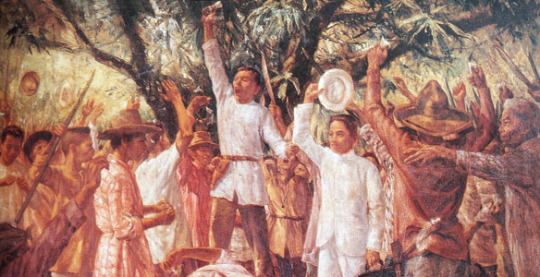
July 9, 1896. William Jennings Bryan, a populist (and avowed anti-imperialist), campaigns for the United States presidency. He was making his "Cross of Gold" speech. While popular, it wasn't enough to win him the White House. A party tied to his candidacy, the People's Party, petered out. The urban electorate seemed alienated by him. Maybe it's because of something in the speech:
"Burn down your cities and leave our farms, and your cities will spring up again; but destroy our farms, and the grass will grow in the streets of every city in the country."
August 23, 1896. After being discovered, the Katipunan convened in Pugad Lawin. Tearing their cedulas, they began the Philippine Revolution. Most Filipinos tend to know how it went. The leader of the Katipunan, Andres Bonifacio was overshadowed by Emilio Aguinaldo and later executed. After a protraced war, Aguinaldo made a pact with the Spanish to go to Hong Kong in exile. The Revolution came back in full swing during the Spanish-American War, declaring independence from Spain and a republic. It eventually got curbstomped by the United States after buying the Philippines from Spain who sold it to save face. Aguinaldo surrendered. The rest, some say, is history. It's a pretty horrible one.
So like, what if it wasn't?
Heavily armed zoomers isekai'd to the Victorian times
POD: In July 9, 1896, Bryan does a quick fib and doesn't say the aforementioned line in his "Cross of Gold" speech. He wins big in the elections. Now, here is where it get's absurd.
At the exact same time in the other side of the two young Filipinos from the future, an Anarchist and a Marxist, wake up in the past, in Balintawak. They have nothing in common other than a) they're well read on history, and b) have lofty, albeit conflicting visions for the country. With them is a big shipping container filled to the brim with M14s, RPG-7 rocket launchers, grenades, radios, and enough ammo to last them.
They have no idea how it got there, no idea how they got there, or who one another is. But this gives them an idea.
In days, our time travellers (aka the "uptimers") meet Bonifacio and talk to him about the cache. The guns were demonstrated in private, and offered training in the new arms. The two are inducted into the Katipunan, and eventually, endeared themselves to its leadership's inner circle as advisors.
The Light of Liberty shines upon the East
The Revolution proceeds as scheduled. The Katipunan is discovered, mass arrests and crackdown lead to anti-Spanish riots and sentiment, the Cry of Pugad Lawin happens. The Katipunan wins San Jose del Monte after ambushing Spanish reinforcements. A mix of modern guerilla tactics, firearms, and the power of hindsight allowed for more victories around the "Eight Revolting Provinces".
As Spain sustains losses, native regiments defected and throws Madrid into disarray. Jose Rizal would be freed from Fort Santiago, but states that he wouldnt join the Revolution. Without the losses that led to Bonifacio's downfall in the Tejeros Convention, a different convention in Calamba confirms the Tagalog Republic as is, united under a triumvirate of Rizal, Aguinaldo and Bonifacio (Aguirizbon). They establish local governments, held elections and dialogue with the people under revolutionary rule.
Delegations to the United States, China and Japan were organized, years earlier than IRL. This becomes a factor for Bryan's administration to intervene in the Philippines during the Spanish American War. Thanks to greater anti-imperialist sentiment in both the public and Congress (albeit colored by anti-immigration rhetoric), notions of invading the country is more easily dismissed. Thanks to greater successes on the ground, support from fellow East Asian countries is magnified, from arms shipments (see IRL Nunobiki Maru) to volunteers from the Revive China Society and Japan.
By 1898, the Revolution has the upper hand, even taking some ships from the Spanish. It had also spread to all parts of the country; In Zamboanga, Katipunero Vicente Alvarez manages to unite the Lumads, Christians and Muslims to siege the Spanish stronghold in Mindanao. In Iloilo, the comite conspirador forms a provisional government. In Negros, a mock military march was all it took for the Spanish to fold. A three-front maneuver from the south in Cavite, the north in Bulacan and the east in Morong (modern Rizal province) attack Manila. A final push sieges Intramuros and finally takes the city. A declaration of independence, drafted before the final push, is signed on June 12, 1898 in the Manila Cathedral.
America still deploys the Asiatic Squadron to the Philippines and, after a standoff with the German Navy, batters what is left of the Spanish Navy in the Battle of Manila Bay. Seeing Manila fully controlled by a "Tagalog Republic", the better perception spurs the American forces to negotiate with the Filipinos. Spanish control over its Empire ended in 1898, after an alternate Treaty of Paris recognized Cuban and Filipino independence. Since the United States still wants something out of this, Washington and Manila agreed for trade privileges and a naval base in Subic.
While independence is ensured, internal cohesion was still a pressing matter. The Tagalog Republic still relied on the Katipunan's bylaws (the dakilang kautusan) and the governments in Visayas and Mindanao, while pledging allegiance to the Katipunan, sought autonomy. A national convention was held and agreed to a federal system comprising the states of Luzon, Visayas and Mindanao. A special status for the Moro sultans was stipulated, and Sulu, by dint of legal succession, remains a protectorate of the new nation. In 1899, in a Congress held in the Ayuntamiento de Manila, the Philippine Republic is declared in Spanish, Tagalog and Hiligaynon.
Immediate ripple effects

In America, Bryan's populist credentials opened the floodgate for other progressives to rise to prominence, from John Peter Atgeld, Henry George, Daniel de Leon to Eugene Debs. Bryan is still however hobbled by his government; parts of his agenda, such as rail regulation and banking reform would still have passed. With a tempered (but still assertive) foreign policy and a public receptive to populist ideas, much of the hallmarks of American imperialism and the surveillance state wouldnt take shape. Hawaii's annexation is averted, though it remains a special territory under an alternate Jones Law.
Urban migration is slower thanks to Bryan's rural leanings. Labor and class conflicts remain conventional and increasingly skewed in favor of workers. Later red scares are weaker and and civil rights causes are more popular despite Bryan's ties to Southern Democrats. A stronger Industrial Workers of the World is founded in 1905, competing with the American Federation of Labor for dominance and backing both Populist and Socialist Labor parties. With Populist Eugene Debs reaching out to George and de Leon, and the IWW's electoral backing, an old alliance is rekindled: the United Labor Party.

Back in the Southeast Asia, guns seized from the Filipinos surprised involved Europeans. How did backwards "indians" get ahold of such weapons? A new arms race begins; with auto rifles and submachine guns from WW1 and WW2 being invented decades before IRL. Japan even converted their bolt action rifles to semi-auto to stay ahead of the curve. The warfare of 1896 would be unknown to Europe until much later, however, with Russia still losing to Japan in 1905 (with minor help from the Philippines). Other technologies were much more freely given, such as when the uptimers, while visiting the US for the Olympics, sold Thomas Edison a license for their electric engine (see next section), while introducing Nikola Tesla to the transistor.
Licking their wounds from the Boxer Rebellion, the Qing Dynasty's continued resistance to change kept them at risk for unrest and invasion. The Xinhai Revolution happens as scheduled; with the lessons of the Philippine Revolution still fresh in their minds, the Tongmenghui (United League) organize a stronger Republican force. An agreement elects Qing general Yuan Shikai as president, though later sidelined by a still-living Song Jiaoren as prime minister. The Chinese Republic would later rebuild and develop, eventually giving Tibet, Mongolia, the Muslim lands and Manchuria autonomy under the principle of Five Races under One Union (wuzu gonghe). Korea however remains taken over by Japan, though due to Ito Hirobumi surviving (his would-be assassin dying sometime in the Russo-Japanese War) and clamor from Koreaphile sentiment at home and overseas, the Treaty of 1910 instead led to a personal union, with Emperor Meiji becoming the ruler of a Japanese-Korean Empire (to the tune of Austria-Hungary).
The events in the far east prompt Amsterdam to enact a more thorough Ethical Policy in their East Indian colony (modern Indonesia), fearing that poor conditions of the natives might lead to an equally devastating revolt. Education and public services are rendered to the natives more greatly, and while the Philippines assured that they have no interests in spreading influence into the DEI, the Dutch still tried their hardest to integrate Indonesia to their sphere. For the Filipinos, they simply encouraged wholly political activism down south—a diplomatic overture, essentially agreeing with the Dutch thesis that violence and "separatism" is an outcome of social neglect.
Developments in the Philippines
With Bonifacio, Jacinto and Rizal alive, they are able to formulate a distinctly Filipino politics after the Revolution. Jacinto completes his work Liwanag at Dilim (Light and Dark), forming a basis of a populist and Marxian liberalism called democracia nacional. The Katipunan dissolves in 1900, divided between Aguinaldo's and Bonifacio's factions. Rizal, fearing a crisis, refounds the Liga Filipina as a kingmaker party and a "check" on the states and parties. His fears, fortunately, would not come to pass; the government, in direct continuation of the old Tagalog Republic before it, proved stable.
Friar lands were redistributed, while pro-Revolutionary landlords in Luzon were encouraged to sell their lands and build industry in the cities through various incentives. Loyalist haciendas were broken up and awarded to Katipuneros. Some, like in Negros, managed to keep their lands in exchange for continued loyalty to the Republic. Most of the incentivized landlords transitioned well into new businesses, largely in brewery, tobacco and manufacturing raw materials, backed by American, European and Japanese investors. By 1905, the Philippine economy was booming and cities growing, thanks to a transitioning agrarian-industrial economy, exporting cotton, textiles, coffee, tobacco and sugarcane.
Industrialization was still a pressing issue, as uptimer advisors scrambled for ways to help the government catch up with its neighbors while maintaining the environment and keeping the growing business elites in check. One such effort was to push for nationalization schemes and labor regulations, including the institution of "national workshops" to guarantee employment and spur industry. Major infrastructure projects such as hydroelectric dams in Angat, Ipo and Caliraya became national priority to electrify the islands.
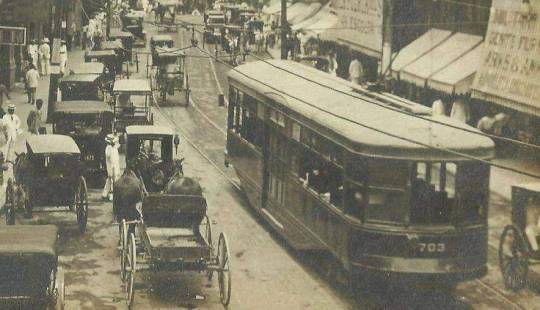
Despite this, both have used their party apparatuses outside Congress (the Marxist joining Bonifacio's party, the Anarchist Rizal's) to ensure their economic visions would come to pass should reforms didn't. The Anarchist uptimer went around the country to teach and found industrial cooperatives (farm tools, machinery, bicycles and guns), credit unions and schemes to buy and distribute surplus rice all around the country; while the Marxist helped found farmer's associations and labor unions, even organizing factory-workshops owned by said groups. These schemes often went in conflict with the haciendero conglomerates; the political system slowly began skewing and pillarizing, between the rural Aguinaldists, the urban, populist Bonifacians and the "cantonal" Rizalists.
Using future knowledge, the uptimers sought to create means for industry and communications in rural communities, from small-scale water turbines, earlier solar panels, efficient flow batteries, CB/ham radio (a similar device would be patented by Nikola Tesla), and LED lamps, to more low-tech solutions such as hydraulic power or pedal-powered systems and machinery to support and develop local economies as per Kropotkin's suggestions. Their greatest invention, a multi-use electric motor based on modern EV tech was manufactured and used for power generation by the cooperatives themselves to help with the manufacture of cheap but sturdy machinery. The invention of e-bikes would later lead to the proliferation of EVs in the country, defined by motorized pedal cars.
Philippine growth was modestly positive throughout the 1900s, though cultural ingenuity (discarte) and the uptimers adopting modern methods ensured that the country would make the best of it; fostering a thriving internal market while still profiting from exports. In the international stage, the Philippines gained prestige as a trade nexus between the East and the Americas, a veritable link that gave them the moniker the "Gate to China". With an economy based on people and an political system skewing populist, the inequality seen in Japan (ie. Zaibatsu) is largely muted in the Philippines.
Unlike in the Dutch East Indies (whose nationalist movement was still in its infancy at the time) Filipino radicals were much more inclined to interfere in the British and French empires, even secretly aiding groups such as the Jugantar, the Ghadar Party and the Quang Phuc Hoi. Linking with Pan-Asian groups in Japan and China, they established a clandestine political network that held a common, anti-colonial agenda.
Butterfly chaos in Europe
In Europe, the effects were profound. After Spain in 1898 lost against the Philippines (and Cuba and the US), Russia followed in 1905 against Japan, and then Italy in 1910 against the Ottoman Empire. All said countries suffered turmoil, especially Russia, whose loss marked the Empire's slow decline until their revolution. Spain had a dramatic transformation in the interim; pivoting to its remaining holdings in Africa, but later falling to its own uprising in 1914 after protests against conscription in their 1913 war in Morocco. Italy was essentially bankrupted by their 1910 escapades in Libya, and by a stroke of poor fortune, decisively lost against a plucky Ottoman Navy, leading to radical polarization between the Left and Right. In all cases, alongside China's own revolution, signaled to the West that Eastern Powers were on the rise.
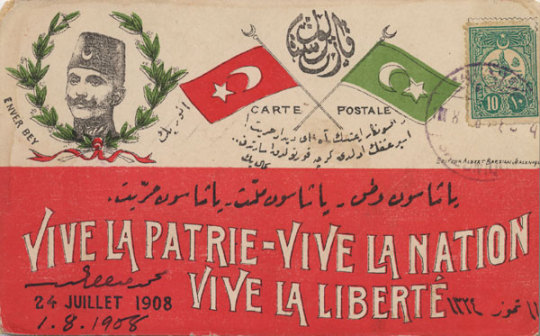
The Young Turks manage to prevent the coup of the Sultan Abdül Hamid II, forcing his abdication and the Ottoman Empire swinging fully to democracy. While discrimination remains a problem, the Armenian Genocide is averted, and the Ottomans even federalized, allowing for Armenians, Romans (ie. Christians west of Constantinople) and Arabs to attain nationhood while still under the Sultan. The relative stability afterward becomes key to keeping the Balkans and winning against Italy, who, after losing the Italo-Turkish War, fully integrated with its Triple Alliance with Germany and Austria-Hungary.
The ensuing Spanish Revolution of 1914 (often referred to as the "Second Cantonal Rebellion") led to the second Spanish Republic (and inadvertently, the Portuguese Revolution). Their disavowal of all colonial holdings opened a vacuum that would be fought betwern France and Germany the following year. A fatal naval standoff around the Straits of Gibraltar between the two powers leads to the Great War in 1915.
Great War, Red Triennium
Due to the nature of the "Gibraltar Incident”, both the Ottomans and the Russians stayed out of the war. Even a neutral Philippines implored Japan-Korea and China to follow suit. However, due to new developments in the arms race, the war still proved devastating and wide-reaching. The Americans, largely ambivalent over the war, remained entirely neutral, only giving the Entente financial aid through loans. Germany, long interested in keeping the Entente bogged down, began to support nationalist movements in India, Indochina and Ireland, with tacit assistance from China and the Philippines. When the War became more brutal and that of attrition, Germany also mulled fomenting chaos in its unstable east.
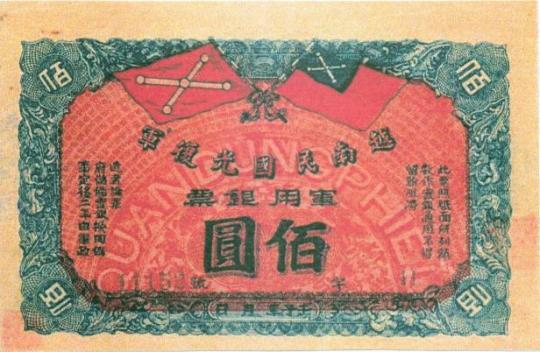
Britain and France hoped that Russia would join the war to turn the tide for the Entente. Due to the war, however, foreign investments have dried up in Russia, leading to significant economic distress. Public opinion was largely against joining the war, seeing it as a conflict between "Western nations". However, in late 1918 Russia was beset by another 1905-style wave of unrest due to the Czar expressing intentions to join the war, Germany organized to send an entire trains' worth of Russian political exiles to exacerbate the situation and essentially keep Russia out of the War. Among them is Vladimir Lenin.
Unlike 1905, by 1919 the Russian government have collapsed, and the Romanovs put into house arrest (later exiled to Canada in 1921) by the provisional government. Due to the presence of other figures, from Anarchists to Mensheviks to rival Bolsheviks to Socialist-Revolutionaries, Lenin wasn't in a position to foment a Bolshevik takeover as he would IRL in 1917, instead the Revolution plays out as a contest between the Provisional Government and the soviet-backed Constituent Assembly, with the latter winning. Without the October Revolution, most parts of the Russian Empire, save for (parts of) Turkestan, Transcaucasia, Poland and Finland remain in Russia as full-fledged states, while other ethnic groups establish new ones, such as the Tungus and Mountain Republics.
Inspired by the events in Russia, frustrated over the Flu Pandemic (called the "Kentucky Flu" since it was first recorded in the US instead of Spain) and struggling with the stalemate of the war, both Germany and France fell to strikes and mutinies months after a pressured Viktor Chernov convened Russia's Constituent Assembly. The "Strasbourg Commune" was declared by mutineers on both sides as they began to turn on their commanders, the first sign of revolution. While a truce was called by their governments, it was too little, too late.
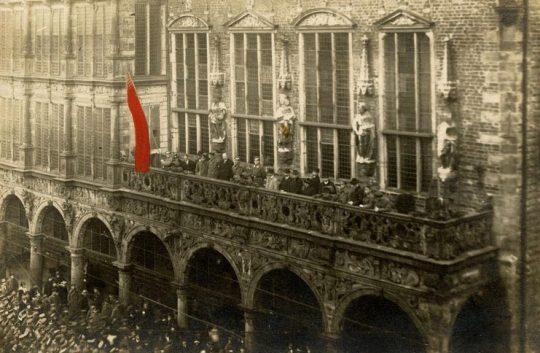
All of Europe collapsed over mutinies and strikes in a span of 3 years, hence being named the "Red Triennium" of 1919-1921. First was France, Germany and the Low Countries. Left wing groups began to act; a living Jean Jaures, sensing the tides, sided with the mutineers and strikers, while the CGT called for a "Second Commune". The German Social Democrats, including Rosa Luxembourg, also seized on the opportunity. The absence of Friedrich Ebert (dead in 1914) allowed the Social Democrats to lean into the emerging "Worker and Soldiers' Councils". By 1921, what is left of the German Empire has fled to a rump East Prussia, while France managed to retake Algiers the same year.
In 1920, Italy, the Low Countries, and Britain followed in the domino effect. Italy was beset by polarization for a decade; Mussolini died in the Libyan War, in his place the more radical National Syndicalists emerged: his friend Filippo Corridoni. Allying with the nationalists of Gabriele D'Annunzio and the Communists of Antonio Gramsci, the nascent "Italian Social Republic" took over the country in an earlier and more violent March on Rome, later backed by the Franco-Germans to consolidate their power in Italy. In Britain, a contentious general strike turns violent after Prince Edward in Black and Tan clothes shot a civilian. As the strikes become revolutions and London overrun, the second British Commonwealth was declared in 1921. In the Netherlands, the Red Week is much more successful, effectively forcing the Dutch to leave for Batavia (modern Jakarta).
The resultant socialist states of Europe would later form an alliance during the 1922 Extraordinary Congress of the Socialist International; France, Germany, Austria and the Low Countries in particular agreed to form a USSR-like union called the Social Federation of Communes, the constituent states renaming themselves as such. Europe has been turned upside down, but the cascading effects of the war weren't done.
They really weren't
Suddenly cut off from Europe in 1921, the United States quickly fell into an economic depression. By this point, the ULP's Populist-Socialist alliance—held together by the IWW and the party leadership—has since formed a concrete social pillar, comprising a pillarized quasi-countersociety through union-owned factories ("Wobbly Shops"), credit unions, tenant unions, cooperatives and a strong bloc in Congress.
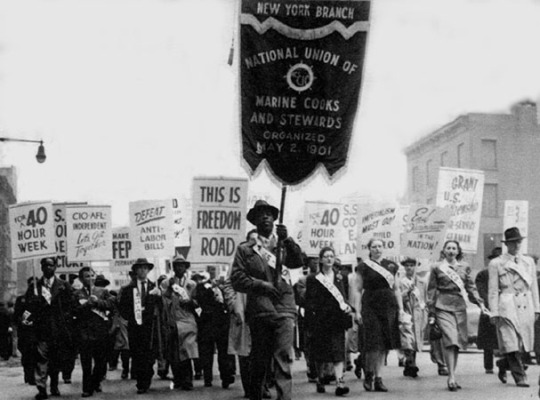
Years prior, in 1918, the country had suffered a general strike and a wider era of discontent (the "Red Summer of '18") after the conservative Democratic administration expressed a desire to join the War, a punitive labor law was passed, and ULP candidates-elect in New York City (including a Populist mayor) were physically barred from being sworn in by Tammany Hall goons with tacit approval of the President. Most of the striker's demands were fulfilled after backdoor negotiations with the ULP in Congress; repealing the law, affirming neutrality and allowing the NY ULP to be sworn in. It showed the strength of the Populist bloc.
While the Bolshevik revolution IRL led to a red scare, the ensuing depression after the "Red Tide" of Europe was easily and squarely blamed on the President and the "robber barons". The ULP-IWW members and voterbase largely cushioned from by quasi-countersociety institutions, used their relative benefits to campaign, winning the LaFolette-Debs ticket in a very contentious 1924 election by a whisker. The election of "Reds" prompted American proto-Fascists—the militarist American Defense Society—to concoct an earlier Business Plot, led by general George Van Horn Moseley. Just a year in office, they immediately overtook the White House, killing LaFolette in the process and staging a coup.
The surviving cabinet reconvened elsewhere and agreed that a Second American Revolution is necessary. The IWW immediately mobilized its unions and shops into a war footing, reorganized its security forces into an army, and the Home and National Guards were called upon in ULP and other loyalist-held states "to defend the Union". The Second Civil War lasted two years; in July 5, 1926, with European volunteers and aid, the Unionists retook Washington DC, and a new constitution was ratified. Holding direct continuity with the old US (keeping the flag and government), the new America is still an ostensibly Socialist one, with the economy organized along the lines of Daniel DeLeon and Henry George. Among other reforms, the Senate was abolished in favor of a syndicalist chamber for the Industrial Unions, and the Electoral College is done away with. Treaties with key Native American tribes are reaffirmed, and some, such as Alaska, Oklahoma and the Navajo were admitted to the Union as states. In 1927, after the refoundation and second Continental Congress of the United States, they aligned themselves to the Socialist International in Europe.
The world, by the 40's
The Philippines has become a stable and independent republic, one directly descended from the Katipunan. Industry is distributed throughout the country while urban density is embraced; thorough land reform and land use kept the dense forests and other natural habitats of the country flourishing. Due to its presence and influence, it managed to maintain a clearer link between East and West, sporting a composite, pluralist, and almost Swiss-style identity where it is both Hispanic and Asiatic. Economic interventions early on prevented the inequality defined by Korean Chaebols and Japanese Zaibatsu from taking shape, offering a counterpoint to Japan's more elitist vision of Pan-Asianism. The (admittedly) haphazard federal structure has also allowed for better rights and representation for indigenous peoples as they are able to appeal to states more receptive to their plight instead of a faraway centralized government.
There is no WW2 but wars continued to happen in that period; from the 1940 Amazon Wars between Colombia and Brazil, the 1930-40 "War of Three Suns" contest between Japan-Korea, the Philippines and China, the 1940-1944 Indonesian National Awakening, the Sino-Russian War of 1938, the Indian Unification of 1936, and Liberia's wars of conquest from 1923-28. For most of the time, the new world-system has largely set.
The West, defined as the Europe and the Americas (minus Brazil's sphere) are defined as a wholly Socialist bloc. Unlike the dogmatic and centralized USSR, the Social Federation acts more like Australia, and are largely defined by the tension between Syndicalist unions, worker councils and the Socialist parliament. The SF and the US are intensely modernist societies (even using a 13-month calendar!), and forms the core of the Bloc. Anti-Jacobin Brazil serves as a counterweight. Russia, while having sympathies to the West, do not consider themselves part of the Socialist bloc, seeing them as skewed towards urban workers. Speaking of the Americas, there has been an effort to form a more cohesive union between Hispanic America ("la patria grande") with anti-Socialists accusing it of being a tendril of US hegemony.
Socialism is much more diverse here, a common tendency with a spectrum between Marx and Proudhon (the SF skews more middle); in turn representing a clear "proletarian" and "agrarian" spectrum that define the Socialist world's political debate. Due to the influence of the Syndicalists, the Fascists are much more left-wing and has garnered controversy within the international movement. There is also Monarchist Socialism, a tendency in the Ottoman Empire, Sweden and Japan-Korea that are also generally accepted as part of the tradition. Americans and SFians scoff at the notion, still.
Due to Europe turning red, most of the colonized world were left rudderless. Some colonies, such as the Cape Colony, French Central Africa and German East Africa simply reformed themselves into independent governments (the Boer Wars were averted in this world). However, colonized peoples also reasserted themselves in other places, as with India and Indochina, but also the Tuareg Confederation in the Sahara, the Khivans and Bukharans of Turkestan, and the native states in West Africa. There is also a Black Nationalist state in the latter region, inspired by Marcus Garvey's ideas, encompassing IRL Liberia, Sierra Leone, Senegal and Guinea. Algeria, after protests to the Social Federation, is separated from France and declared its own Commune (hey, at least). For what its worth, New Imperialism was shattered by the Great War.
There seems to be a trend towards superstates and federations: there is Russia, the Social Federation, the US, Canada, Australia, China, the Tuaregs, the Philippines, maybe India, Iberia (Spain + Portugal), and the Ottoman Empire.
The Ottoman Empire (and its buddies, Egypt and Persia) are thriving after a bout of being the "Sick Man of Europe". Due to their influence and economic power (swimming in oil profits; while EVs dominate, shipping and planes still run on oil). India on the other hand, is a bit more like revolutionary Indonesia IRL, united by a more inward-looking nationalism. China, like Brazil, serves as a counterpoint bloc in East Asia.
Alternate technological innovations have led to the proliferation of alternate technologies. Transistors are innovated on earlier, leading to earlier advanced radios and television and computers. Better communications (ergo coordination) and earlier computing in the Socialist world prompts theories of cybernetics to influence policy. The internet as we know it wouldn't exist. EVs continue to be mainstream since the 1900s as gas vehicles don't take off, thanks to the invention of a more efficient battery and the multi-use motor. Trains, however, due to their sheer mass, still use oil. "Low-tech" coupled with radio and transistors predominates industries in the East, especially in India where things are still manufactured by hand.
The world is still rather unstable given the competing interests between regions and the world, but generally most of the fighting has subsided in favor of asymmetric interconnectivity.
I'm only sure about the events from 1896 to maybe 1921. The further I go from there the vaguer/broader it gets. But it's still a good place to start.
#raja posts shit#alternate history#philippines#i once had a ring#lore#worldbuilding#alternate universe#speculation#synergies#synergies lore#philippine revolution#i spent way too much time on this
21 notes
·
View notes
Photo



Transformers
Studio Series 50
The Last Knight
Hotrod (WWII)
by Hasbro (2019)
I picked up WWII Hotrod on 08-16-21 at my local Ollies. They had a bunch of figures wasting away there, but this was the only one I really cared about.
This version of Hotrod was seen in 2017s ‘The Last Knight’ during a brief flashback scene.
WWII Hotrod comes with only himself and a grenade launcher.

Vehicle Mode:
I’m not going to bury the lead here. Hotrod’s vehicle mode is Nazi. For context in the ‘The Last Knight’ movie Hotrod and Bumblebee are in disguise during WWII and they’re about to attack a Nazi stronghold. Understandably Hasbro left out the markings.

The vehicle is an armored car of sorts which is mostly forest green, with some darker shades of green, some silver highlights, and some black.
All-in-all a pretty dull color pallet, but that’s WWII for you...


The primary weapon can be stored on either the 5mm port on the roof, or in the passenger side opening.



The vehicle mode rolls pretty well, it’s got some good sized wheels, however my complaint is that some panels of the vehicle mode don’t attach well, and some areas kept popping off and I had to tab them back in; it was a frustrating process at time.
Transformation:
Transforming Hotrod in to robot mode isn’t too difficult, aside from fighting with the afore mentioned panels.
Robot Mode:
As far as robot mode is concerned you get…an okay robot mode. This toy didn’t blow my mind or anything. You’re still getting mostly army green colors and some red/orange paint apps on the arms and face. It’s pretty underwhelming in my honest opinion.

The robot mode itself has a lot of neat greebly details, he stands well, and that head sculpt is very…Bayformers…It’s well detailed, but of course it looks nothing like the source material.


He does have a noticeable backpack, and it sort of gets in the way of posing.

Hotrod’s weapon is the grenade launcher. He holds it well and it’s well sculpt. And that’s really all I got to say about this toy. Overall I was pretty underwhelmed by this version of Hotrod, and I’m happy that I got him at a reduced price.


#toys#action figures#transformers#hotrod#the last knight#bayformers#wwii#world war II#hasbro#studio series
7 notes
·
View notes
Text
Sector BB ((the Bikini Bottom Kids next door))


meet the operative's of the bikini bottom KND!
Name: Peggy Fangs
Codename: Numbuh H20
Role: Leader
Gender: female
Race: Piranha
Age: 10
Peggy's an expert candy treasure hunter who loves acting like a rough and mean pirate captain, that is always looking for adventure.
While Peggy can come off as greedy sometimes, always keeping her toy's/candy to herself not wanting people to touch them but would trade everything she had just for her friends.
Name: Ollie Suction
Codename: Numbuh H3o
Role: 2x4 tech expert
Gender: male
Race: Octopus
Age: 9
Ollie's the freindly and energetic kid that loves collecting junk that humans dump into the sea. He tends to be egotistical, gets a big head sometimes and can be stubborn.
Name: Pete Bloat
Codename: Numbuh H4o
Role: medic/pilot
Gender: male
Race: pufferfish
Age: 8
The goody two shoes who is a stickler for the rules and plays by the book, he at first thought this Kids Next Door stuff was insane and only joined because his freinds were joining. Anytime he panics the gang always gotta calm him down when missions get heated. His friend's give him the confidence to stand up to injustice, he may be a wimp but he can be a brace wimp when the going gets tough.
Name: Dolly Fields
Codename: Numbuh H5o
Role: second in command
Gender: female
Race: sea sponge
Age: 10
The kind, calm, optimistic jellyfish expert who loves all underwater wildlife. She's very patient with others and is hard to anger, but even the patient ones have a limit because she's a beast when she's angry.
Name:Terri Tomshell
Codename: Numbuh H6o
Role: Karate master
Gender: female
Race: sea turtle
Age: 10
The competitive and sassy fighter of the group. She's obsessed with karate. She's often annoyed by her teammates and their antics but loves them at the end of the day. She can let her anger get the better of her, leading Terri to do dumb things here and there.
Now behold their treehouse base

located at 573 Seaweed Street, a giant coral treehouse growing out from a average bikini bottom house, the tree consists of a submarine as the main hanger that contains their submarine air ships and boats, lighthouse, a pineapple and other junk tossed into the ocean by humans.
The base has wepons like a giant plunger harpoon launcher to hunt down sea monsters, powered by thousands of sea hamsters, It's loaded with sea missiles that explode algae and normal explosive material, the base defense system has gaurd worms and fish net launchers.
Now here's a small Rouge gallery that Sector BB are arch enemies with.
(Villains left from right are.....)

Mr. Zapped
An electric eel mad scientist that works as a teacher at Bikini Bottom elementary school, his crimes against childhood are being the meanest teacher ever, does evil extremists on his students to turn them into minions so he can rule the school and has the power to blast electric F's at people.
Tattle Teen
A bratty teenage girl who's the local tattle tale and is always on the case of whatever it is Sector BB is doing, she does bad stuff and frames children to get herself off the hook. She attacks using Battle Ready Armor, which gives her a diver outfit that shoots torpedoes, fishing nets, and a harpoon grappling hook.
Officer Hookline
A truant officer that takes his job way too seriously, he hates how Sector BB cut school to go on missions and tries getting the kids expelled but never seems to catch them.
Al Algae
A mutant blob of living Algae that was created by Mr. Zapped, it grows and spreads itself all over playgrounds and kids fun places making them uninhabitable to play in.

These are "The Adorable Guppies From Below The Atoll" they are Sector BB's ((bikini bottom))
arch rivals, these evil guppies are rich kids who live inside a fancy titanic like boat mansion with their evil care taker, "SandDad"
Here's a brief description of each of them left to right
Claire
A female clownfish who's very intelligent and is the inventor of the trio, she's sarcastic, cynical and very materialistic as she values her inventions a lot"
Gill
"Is the leader of the trio, he's wimpy, easy to anger and will throw a tantrum over everything."
Kelly
"A soft toned girl who rarely speaks and is unpredictable, she's the fighter who uses her deadly ballaria skills as combat, she's basically a ninja"
SandDad
"An elderly merman with power over sand, he's a cranky cook that used to be one of Mermaid Man and Barnacle Boys' enemies back in the day. He's angry that the youth of today don't remember him as one of MM&BB's greatest villains, so he decided to make them remember him by tormenting the children of the sea.
#codename kids next door#kidsnextdoormultiverse#kids next door#kndmultiverse#spongebob#original character#my oc art#spongebon squarepants#crossover#cartoons#art#artists on tumblr#nickelodeon#cartoon network#codename knd#fanart
4 notes
·
View notes
Text
Measures by the Turkish National Intelligence Organization.

Turkey is actively strengthening the combat capabilities of the militias it controls in the Kurdish Autonomous Region of Iraq. This includes increasing the number of groups in exchange for monetary compensation, training fighters, and supplying them with modern weapons.
Recruitment of new fighters is carried out through social networks and local intelligence networks with the offer of significant monetary compensation. The training includes intensive courses in tactics, intelligence, and counterintelligence, which are held both in Turkey and Iraq.
Fighters receive modern weapons and equipment, such as high-precision rifles, machine guns, grenade launchers, and unmanned aerial vehicles. This enhances their reconnaissance capabilities and allows them to fire accurately at the enemy.
The main goals: to weaken the influence of Kurdish military formations, create their own zones of influence in the region, ensure control over strategic routes and resources, and demonstrate strength in diplomatic negotiations.
Result: strengthening the combat structures can lead to tensions and serious political and military consequences in the region.
0 notes
Text
BBC 0406 26 Aug 2024
12095Khz 0358 26 AUG 2024 - BBC (UNITED KINGDOM) in ENGLISH from TALATA VOLONONDRY. SINPO = 55434. English, dead carrier s/on @0358z then ID@0359z pips and newsday preview. @0401z World News anchored by Neil Nunes. Israel has said it carried out a wave of pre-emptive strikes across southern Lebanon to thwart a large-scale rocket and drone attack by Hezbollah. Jets destroyed thousands of the Iran-backed armed group’s rocket launchers on Sunday morning, Israel's military said. Hezbollah and its Amal allies said three fighters had been killed. Hezbollah said it had still managed to fire 320 rockets and drones at Israel in retaliation for the assassination of a senior commander. According to Israel's military, one Israeli navy soldier was killed. The US says it is working to avoid any further escalation after 10 months of hostilities that have raised fears of an all-out war. § There was no agreement on Sunday in the Gaza ceasefire talks that took place in Cairo, with neither Hamas nor Israel agreeing to several compromises presented by mediators, two Egyptian security sources said, casting doubt on the chances of success in the latest U.S.-backed effort to end the 10-month old war. § Messaging app Telegram has said its CEO Pavel Durov, who was detained in France on Saturday, has "nothing to hide". The investigation is reportedly about insufficient moderation, with Mr Durov accused of failing to take steps to curb criminal uses of encrypted messaging app. The app is accused of failure to co-operate with law enforcement over drug trafficking, child sexual content and fraud. Telegram said in a statement that "its moderation is within industry standards and constantly improving". "It is absurd to claim that a platform or its owner are responsible for abuse of that platform," the app said. § Brazilian authorities launch arson probe as dozens of municipalities in Sao Paulo state are put on high alert as wildfires rage throughout Brazil. § Pacific island leaders and top diplomats from key partners including China and the United States have gathered in Tonga for a week of talks on decolonization of New Caledonia, climate change and regional security and cohesion. The Pacific Island Forum’s importance as the peak regional diplomatic body is growing as geopolitical competition heats up in the Pacific Islands. Nations are contending with creeping militarization and an unprecedented battle for influence as the U.S. and allies like Australia push back against China’s inroads. § A "right to disconnect" rule has come into effect in Australia, offering relief to people who feel forced to take calls or read messages from employers after they finish their day’s work. The new law allows employees to ignore communications after hours if they choose to, without fear of being punished by their bosses. § A tourist has died and two more are missing after an ice cave collapsed during a tour group visit to a glacier in Iceland, police have said. A group of 25 tourists were on an organised tour of the Breioamerkurjokull glacier in the south of the country when a wall of ice collapsed inside the cave. § Millions of Shiite Muslims packed the streets of the Iraqi city of Karbala Saturday on their annual pilgrim to mark the death of Prophet Muhammad's grandson, Hussein, who became a symbol of resistance when he refused to pledge allegiance to the Umayyad caliphate, leading to his death in battle during the tumultuous first century of Islam's history. @0406z "Newsday" begins. Backyard gutter antenna w/MFJ-1020C active antenna (used as a preamplifier/preselector), JRC NRD-535D, 250kW, beamAz 315°, bearing 63°. Received at Plymouth, MN, United States, 15359KM from transmitter at Talata Volonondry. Local time: 2258.
0 notes
Text
Measures by the Turkish National Intelligence Organization.

Turkey is actively strengthening the combat capabilities of the militias it controls in the Kurdish Autonomous Region of Iraq. This includes increasing the number of groups in exchange for monetary compensation, training fighters, and supplying them with modern weapons.
Recruitment of new fighters is carried out through social networks and local intelligence networks with the offer of significant monetary compensation. The training includes intensive courses in tactics, intelligence, and counterintelligence, which are held both in Turkey and Iraq.
Fighters receive modern weapons and equipment, such as high-precision rifles, machine guns, grenade launchers, and unmanned aerial vehicles. This enhances their reconnaissance capabilities and allows them to fire accurately at the enemy.
The main goals: to weaken the influence of Kurdish military formations, create their own zones of influence in the region, ensure control over strategic routes and resources, and demonstrate strength in diplomatic negotiations.
Result: strengthening the combat structures can lead to tensions and serious political and military consequences in the region.
0 notes
Text
20 Essential Flutter Tools to Know in 2024
Flutter has emerged as a leading framework for building cross-platform mobile applications, offering a rich set of tools and features to streamline the development process. As we step into 2024, mobile application development companies need to stay updated with the latest Flutter tools to enhance their development workflow and deliver high-quality apps.
In this blog, we'll explore 20 essential Flutter tools that every developer should know in 2024, helping you stay ahead in the rapidly evolving world of mobile app development.

Why Flutter?
Flutter is a popular choice for mobile app development due to its fast development cycle, hot reload feature for quick updates, and single codebase for both iOS and Android. It offers a rich set of customizable widgets, excellent performance, and robust community support, making it ideal for building high-quality apps efficiently.
1. Flutter Inspector
The Flutter Inspector is a powerful tool that allows developers to visualize and explore the widget tree of their Flutter app. It helps in debugging UI issues and optimizing the app's performance.
2. Dart DevTools
Dart DevTools is a suite of tools that help developers debug and analyze their Dart and Flutter code. It provides insights into memory usage, performance profiling, and more.
3. FlutterFire
FlutterFire is a set of Flutter plugins that enable Firebase services in Flutter apps. It provides easy integration with Firebase services such as Authentication, Cloud Firestore, and Cloud Messaging.
4. Flutter Localizations
Flutter Localizations is a package that provides tools for internationalizing Flutter apps, allowing developers to easily add support for multiple languages and locales.
5. RxDart
RxDart is a reactive programming library for Dart that provides developers with powerful tools for managing asynchronous data streams in Flutter apps.
6. Flutter Form Builder
The Flutter Form Builder package simplifies the process of building forms in Flutter apps, offering a variety of pre-built form fields and validation options.
7. Dio
Dio is a powerful HTTP client for Dart that simplifies the process of making HTTP requests in Flutter apps, offering features such as request cancellation and interceptors.
8. Hive
Hive is a lightweight and fast key-value database for Flutter apps, offering efficient data storage and retrieval capabilities.
9. Flutter Bloc
Flutter Bloc is a state management library for Flutter apps that helps in organizing code and managing app states using the BLoC (Business Logic Component) pattern.
10. Provider
Provider is a simple and flexible state management solution for Flutter apps that offers a lightweight and easy-to-use alternative to other state management libraries.
11. Fluro
Fluro is a Flutter routing library that provides a declarative way to define routes in Flutter apps, making it easy to navigate between screens.
12. VelocityX
VelocityX is a Flutter UI library that offers a collection of pre-built widgets and utilities for building beautiful and responsive user interfaces.
13. GetX
GetX is a powerful state management and navigation library for Flutter apps that offers a simple and intuitive API for managing app state and navigation.
14. Firebase Analytics
Firebase Analytics is a tool that helps developers track user engagement and app usage in Flutter apps, providing valuable insights for app optimization.
15. Flutter Launcher Icons
Flutter Launcher Icons is a tool that simplifies the process of generating app launcher icons for Flutter apps, ensuring consistent and high-quality icons across different platforms.
16. Flutter Secure Storage
Flutter Secure Storage is a package that provides a secure and encrypted storage solution for sensitive data in Flutter apps, ensuring that user data is protected.
17. Flutter SVG
Flutter SVG is a package that allows developers to easily render SVG images in Flutter apps, providing a scalable and flexible solution for vector graphics.
18. Firebase Performance Monitoring
Firebase Performance Monitoring is a tool that helps developers monitor and optimize the performance of their Flutter apps, ensuring a smooth and responsive user experience.
19. Flutter Screen Util
Flutter Screen Util is a package that helps developers design Flutter apps that are responsive and adaptable to different screen sizes and resolutions.
20. Flutter Hooks
Flutter Hooks is a library that provides a way to use stateful logic and side effects in Flutter apps, offering a more functional approach to building UI components.
These 20 essential Flutter tools are invaluable for mobile application development companies looking to create high-quality, feature-rich Flutter apps in 2024. By leveraging these tools, developers can streamline their development workflow, optimize app performance, and deliver exceptional user experiences. Stay updated with the latest Flutter tools and elevate your Flutter app development to new heights.
For additional information, get in touch with a mobile application development company that may help your business expand indirectly by providing better, more user-friendly functionalities that are simple to use.
0 notes
Text
Simon Gwozdz: Equatorial Space’s Mission to Revolutionize Spaceflight with Propulsion Technology
Aerospace and Aviation made the landing on the moon possible by Neil Armstrong. We know astronomy, its research, and its exploration with the use of innovative solutions and technological instruments. We have come quite a long way in the scientific study of space, and there will be continuous research and development for better and improved solutions that will help us understand beyond what we already know.

In the Aerospace and Aviation industry like the well-known NASA, scientists, architects, researchers, engineers, etc work together for the government, companies, and organizations to make learning astronomy better with new and improved innovations. Therefore in this article, we discuss one such startup company in Singapore called Equatorial Space which aims to make spaceflights safer and affordable through rocket propulsion. Founded by Simon Gwozdz, Equatorial Space is rapidly gaining momentum.
Simon Gwozdz: Founder and CEO
Simon Gwozdz is an aspiring founder and CEO of Equatorial Space, which is Southeast Asia’s leading rocket propulsion company. He completed his graduation with a Bachelor of Science degree at the National University of Singapore and Arts education from Millennia Institute. He was a Motor Transport Operator at the Singapore Armed Forces (SAF) where he was responsible for safe, efficient, and timely transportation. Later his passion for this sector from childhood led him to start a space launch company.
Simon along with his co-founders thought of entering the New Space Field for some years where he was also learning science and engineering along with astronautics parallelly. He also connected with the local industry, and later the vision to make spaceflight affordable and safe he founded Equatorial Space in the year 2017.
About Equatorial Space
Equatorial Space is Southeast Asia’s leading rocket propulsion company founded in year 2017 by Simon Gwozdz. It has headquarters located in Singapore and aims to make spaceflight safer and affordable. The company launched its first commercially developed prototype of a rocket in the year 2020 which was built with highly differentiated technologies in challenging logistical settings.
The company has made different vehicle launchers that have unique features. Volans is a low-cost and convenient space launch vehicle that is designed with the capabilities of delivering 35-70 kg of payload which also depends on inclination. Volans is the first 100% pyrotechnics and explosives-free launcher that is built with the help of Equatorial Space’s innovative rocket propulsion technology. Next is Dorado which is a responsive launcher designed to deliver small payloads into a suborbital trajectory. It eliminates toxic effluents by producing small amounts of carbon and greenhouse gases. It is also designed to be 100% explosives-free and ships can be fully inert for easy deployment to any range in the world. The Spark (Student Payload Academic Rocket Kit) is the first rocket kit that was developed commercially with payload support for student training. It is 100% pyrotechnic-free and will allow students to conduct space experiments from design to launch.
The technology of HRF-1 fuel delivers high regression rates as well as excellent mechanical and structural properties. The HRF-1 offers structural stability, regression rates between 4-8mm/s, GHS reduction of up to 70%, and density of up to 1600kg/m3. All of these will provide quality and performance with the potential to make low-cost, safer space launchers.
The company has gained supporters and partners along their journey with the visionary goal. Some of them are elev*.vc, Seeds Capital, Farquhar Venture Capital, Space Zone India, aspace, etc. The company has received accolades and awards from the National Additive Manufacturing Innovation Cluster (NAMIC), Hello Tomorrow, and Mohammed Bin Rashid Space Centre. The incubators and accelerators for the company are sourced from techstars_, Q Stations, The Hangar, and the Space Accelerator Programme. Equatorial Space has been identified and propelled in the path to make spaceflights safer and more affordable with its unique rocket propulsion technologies.
Visit More : https://apacbusinesstimes.com/simon-gwozdz/
0 notes
Text
Budgeting for Brilliance: How to Plan a Spectacular Fireworks Show Without Breaking the Bank

From village festivals to grand civic events, a fireworks show can be a breathtaking highlight that leaves spectators in awe. Despite their beauty, the fireworks business is filled with high costs and high stakes. Here’s how you can create an explosion effects of excitement while keeping the dollars from going up in smoke.
The Golden Formula – Planning Your Pyrotechnics with Precision
Before you light the first fuse, a solid plan is the foundation of a successful and cost-effective fireworks display. Start by understanding your space and its safety limitations. A smaller venue may not require the largest shells, and a larger one might dwarf anything less than a hundred-crown chrysanthemum. Equally important is to understand your audience – some may appreciate a longer show packed with smaller, colorful bursts, while others might prefer those that require a deeper sky and ear-ringing bangs.
Since fireworks are a seasonal product, buying off-peak can result in significant cost savings. Always be sure to check local regulations and permit costs – violating fireworks laws can turn a budget-friendly show into an expensive legal nightmare.
Sourcing the Spark – Finding Quality Pyrotechnics
Sourcing your fireworks is one of the most important aspects of budgeting for your display. Cutting corners on quality is not an option when safety is concerned. Look for reputable retailers and wholesalers who can provide the right mix of price and performance. Remember, the true cost of fireworks encompasses more than the initial purchase – it includes means of transportation, storage, and any additional licensing fees that may apply.
To make a bang for your buck while ensuring safety and quality, consider bulk buying. This strategy can even allow you to negotiate better prices or get higher-grade products at a reduced cost. For those who prefer a more hands-on approach, there are DIY display kits that come with all the essentials for a fantastic show at a lower cost.
Choreographing the Sky Dance – Designing Your Fireworks Sequence
An underrated method for reducing costs is to design your display in a way that allows you to get the most out of every firework. This doesn’t mean scrimping on the variety or choosing lesser products – it’s all in the timing. A well-choreographed display can make a few dozen fireworks look like hundreds, simply by spacing out and coordinating their deployment to create a narrative in the sky.
The best way to tackle this is by using specialized software, which can now be rented rather than purchased outright, limiting your initial investment. With a ‘virtual’ demonstration available, it’s simpler to make changes, ensuring that every last firework is included in your budget-friendly blockbuster.
Lighting the Fuse – Safety and Preparation
Preparation is synonymous with budgeting when it comes to fireworks. Taking the time to train and prepare your volunteers can minimize errors that lead to costly misfires or injuries. Additionally, invest in proper equipment for lighting and safety, which could lower your insurance premiums and prevent legal setbacks.
When it comes to safety, there is no room for compromise. Always follow industry best practices, use fire-retardant materials, and have a well-thought-out emergency plan in place, to avoid explosion effects. A safe show equates to fewer unplanned explosions – both for your wallet and your audience's ears!
Wrapping Up – Post-Show Evaluation and Future Planning
Once the final shell has fizzled out and the smoke has cleared, it's time to evaluate the success of your fireworks display. Conducting a thorough review of customer feedback, costs, and safety concerns can provide insights for future shows and cost-saving measures.
Consider whether there are any reusable items such as launchers or effects that can be salvaged for later events. And don't forget to maintain good relationships with your suppliers and local authorities – loyalty and trust can often lead to discounts and smoother permit processes for future shows.
In the end, a fantastic fireworks show does not have to explode your budget. With careful planning, smart purchasing, and an emphasis on safety, you can light up the night without burning through your funds.
0 notes
Text
The Role of Blockchain in Climate Data Management
Blockchain is an emerging technology that holds the potential to transform climate action at scale by increasing the efficiency, transparency and integrity of data management in a number of key ways. These improvements can have a significant impact on how we collect, verify and manage information about climate change impacts and climate resilience solutions, particularly in the areas of land use, forestry, agriculture and energy sectors.
Compared to traditional systems, blockchain provides transparent and tamper-resistant data records. This enables stakeholders to make data-driven decisions in an open and trustworthy environment. Moreover, decentralizing the control of these data records through blockchain prevents any single entity from holding undue influence, which enhances the reliability of information.

Blockchain also facilitates the collection of more accurate, standardised and easily accessible data on carbon emissions. This can help to increase the speed and accuracy of carbon reporting, enabling companies to achieve their climate targets more quickly and effectively. It can also increase transparency of supply chains and reduce costs by reducing the need for paper-based reporting and auditing.
As a result, the blockchain is an ideal solution for managing and storing climate data. However, the technology’s high energy consumption and scalability challenges need to be addressed in order to maximize its benefits.
The good news is that the community of blockchain developers is actively exploring ways to address these challenges. Innovative solutions, such as sidechains and sharding, are expected to significantly reduce What is techogle? the energy usage of blockchains while enhancing their scalability. Furthermore, alternative “green” mining methods and consensus mechanisms are being explored to minimize the environmental impact of blockchains.
Blockchain can also be used to support disaster relief by providing a reliable, secure and transparent platform to track and trace the flow of resources in the wake of natural catastrophes. This can lead to improved efficiency and effectiveness of logistics and humanitarian efforts, especially in the context of vulnerable populations such as children, elderly people or those living with disabilities.
Ultimately, the success of blockchain in climate actions depends on building public awareness and trust. This can be achieved through clear communication and the highlighting of positive examples. Moreover, investing in blockchain literacy through capacity building in local governments, inclusion of blockchain-related subjects in university curricula in developing countries and integration of blockchain upskilling within startup accelerators and venture launchers is critical.
In addition, it is imperative to ensure that all blockchain-based solutions are gender-sensitive, taking into account the different experiences, needs and technology website perspectives of women and men in climate resilience and mitigation efforts. In this way, we can leverage the power of blockchain to build a more resilient world, especially in emerging markets. Ultimately, blockchain can be an important catalyst for accelerating the adoption and integration of climate action and resilience into mainstream development strategies. This article was written by True Tamplin (@TrueTamplin) and originally published on the The Global Gender Institute blog. The Global Gender Institute is a leading think tank and advocacy organization on gender equality, social justice, sustainable development, the green economy and human rights issues.
1 note
·
View note
Text

Ankor Wat, Cambodia — Flashback 1993. We had an amazing time visiting Ankor Wat and seeing it while you could still enjoy its wild history and beauty. It was four fabulous days touring around with our motorbike guides leading the way. Tourists were pretty much non existent. I think it was all backpackers and we were all staying at the one same guesthouse. On my wall at home (well in storage) I’ve got a massive rubbing from one of the walls of the main temple that they were selling for $1! I’m sure you can’t do rubbings anymore. In one ruin I actually found what I thought was an old grenade launcher. Turns out it wasn’t an old one after all. Unfortunately the Khmer Rouge were still quite active in the area and the UN and any locals that could afford to were getting the hell out of town. Elizabeth and I made haste to do the same…but that’s another story.




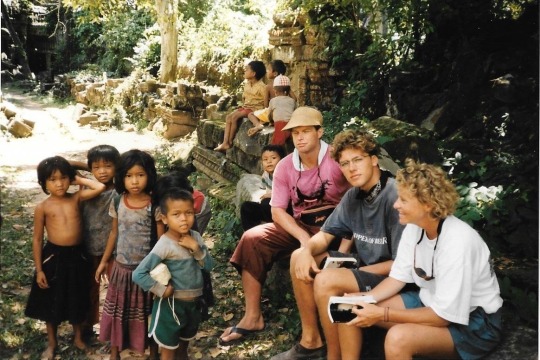
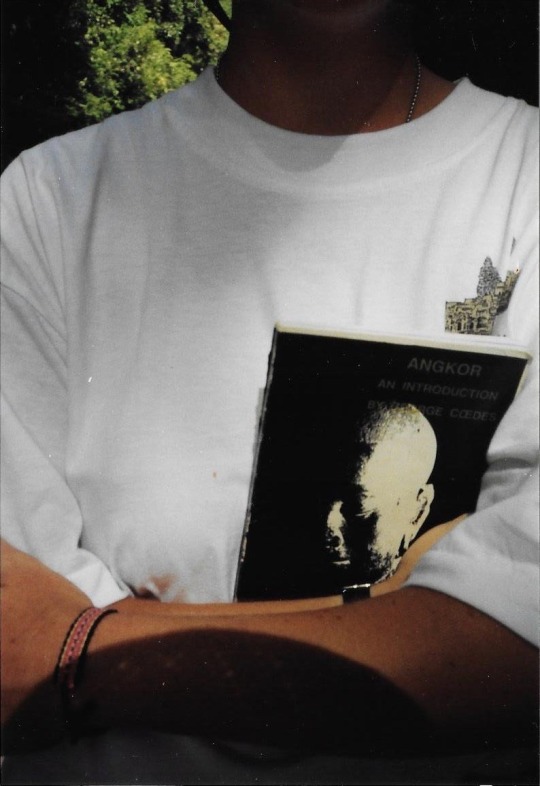



0 notes